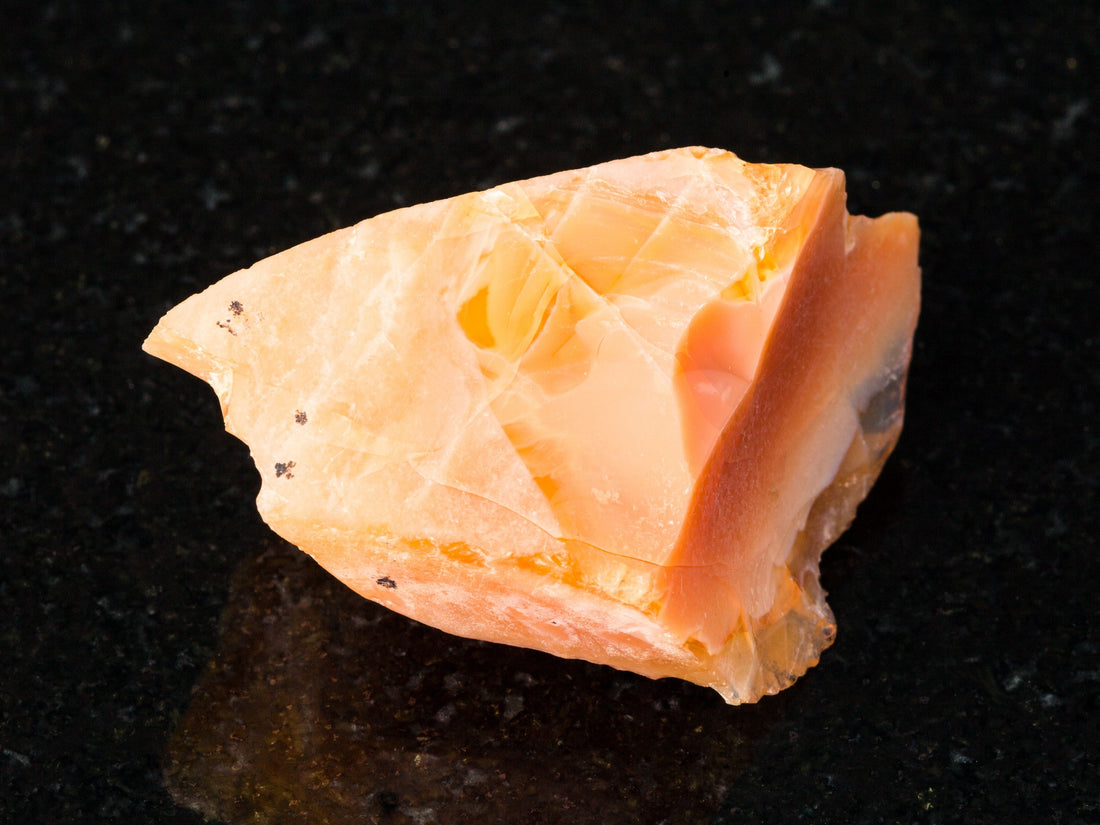October Birthstone is Opal

One can see the night, the day, the ocean, wait the whole world in an Opal!
There are a few different types of opals; Black/Dark Opal, Light/White Opal, Boulder Opal, Matrix Opal, Composite Natural Opal, fake as fake can be opal, and deceiving opal doublets and triplets.
Opals are formed from rain, formed when water seeps down into crevasses and picks up silicon dioxide on the way. Over time the rock, evaporates, and leaves behind what will become this beautiful and colorful gemstone. Some opals need to dry out a bit or else crazing can occur, which are cracks in the opal.
Play of Color- This refers to the rainbow like colors within an opal. Some refer to it as its flash, because its like a flash of light similar to a prism in a window.
Fun facts- the 14th anniversary gemstone. Opals have been popular among Royalty; The crown of the Holy Roman Emperor has a fiery red Opal called “The Burning of Troy”, which was given as a gift from Napoleon to Josephine, and not exist in the crown jewels of France. Queen Victorias favorite wedding gift were opals.
Care of Opals- Opals are a softer stone, therefore it is important to be cautious with wearing them in rings. In general you do not want avoid hot temperatures and any chemicals they may come in contact with.
For your sake I will highlight my favorite Opals and briefly discuss the rotten ones.
Major sources; Australia, Ethiopia, Brazil (the ones below are from my favorite sources of each type)

Boulder Opal From Queensland AustraliaThese are known for its vibrant veins or cracks within the brown “host rocks”. Different mines produce unique colors and variations in the Boulder Opal.

Mexican Fire OpalFrom Jalisco, MexicoFire opal is named for its rich red, orange and yellow background color. The more valuable stones have the play of color.

White opalsFrom AustraliaThese along with the Black Opals are among the more plentiful common Opals. Can be referred to as “milk” or “milky” Opals.

Black OpalsBlack opals color can pop which makes them popular! They call them black even though they are actually more dark blue.

Opal Doublets and TripletsIt is a good idea to back opal with a strong material such as black jade. This process uses a type of epoxy that binds the opal and jade together. Then depending on preference and stability one may want to epoxy a clear hard stone on top of the opal, this will make it resistant to chipping and breakage. But, if you are buying for ct weight this can be a way jewelers deceive customers by weighing the entire doublet or triplet.

Synthetic opals-To me these look like a cheap version of the 80’s in turtle form. The rainbow matrix is just too perfect and price is just too low to make this a real stone.
p